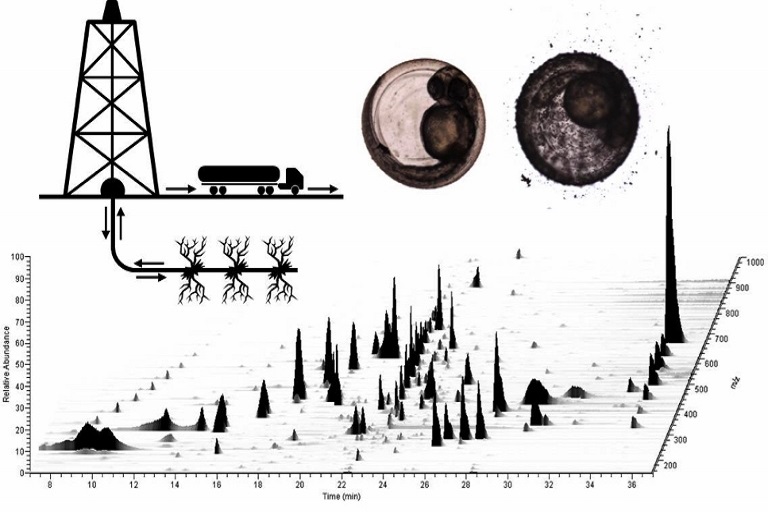
Hydraulic fracturing (aka “Fracking”) combined with horizontal drilling is an emerging technology for the recovery of unconventional petroleum reserves throughout North America and worldwide. In Canada it is being extensively utilized in the provinces of Alberta and British Columbia, while in other jurisdictions fracturing is under consideration or temporary moratorium.
Hydraulic fracturing is a water-intensive technology, requiring water to fracture to fracture the shale. Flowback wastewaters that return to the surface following a fracturing episode can contain high concentrations of salts, heavy metals, and organic substances, and have not been well-characterized to date.

Encana gas plant, courtesy Henry He
The overall project aims to determine the source of hazardous substances in flowback and produced wastewaters, and address the causes of biocorrosion and biofouling by microbial communities found in groundwater, surface water, and deep formation fluids in the hydraulic fracturing water cycle. The part of the study conducted in my lab helps to constrain which fraction(s) of flowback wastewater may be hazardous or contaminated with indigenous or exogenous microbes and require treatment, and which can be reused or recycled. Our research will increase the efficiency of water use at the well site and decrease the overall use of fresh water. In the final years of the study, the roles of deep formation geology and formation water geochemistry on flowback chemistry will be studied across several geologic regions. Ultimately this will provide stakeholders with a framework to predict flowback and produced wastewater chemistry, microbiology, and toxicity.
In collaboration with our industrial partner EnCana and our academic collaborators Dr. Dan Alessi and Dr. Jon Martin, we are investigating the hazard of hydraulic fracturing flowback and produced water. Should spills of these fluids occur, our aim is to understand the impact on local native species (rainbow trout, Arctic grayling, Dapnia sp., Hyalella sp) and to identify using sub-lethal test the molecular signature of exposure to these complex fluids. The overall aim is to reduce environmental hazard and risk from these fluids, reduce water treatment costs and to improve environmental performance for the industry.



